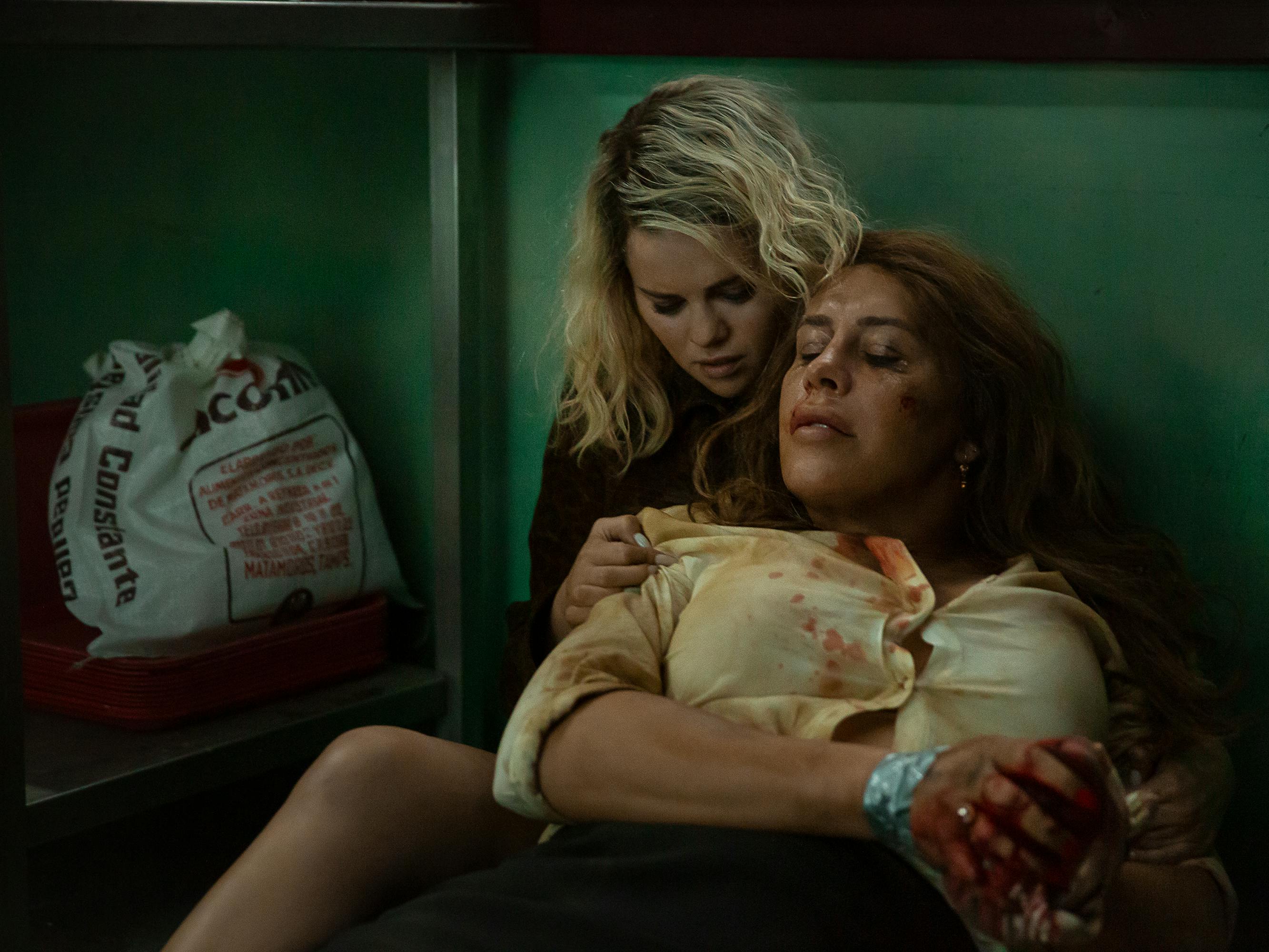The Emilia Pérez performer is an absolute revelation in this thrill ride of a movie — here’s how she brought bright life to the silver screen.
Of the many surprises and delights we’ve encountered during this year’s festival film season, none has been more exciting than Karla Sofía Gascón’s breakout moment in Emilia Pérez. Playing the titular lead in the musical crime drama from director Jacques Audiard, she’s an absolute revelation as a fearsome cartel leader who yearns for life as her true self. In the genre-defying film, the actress had the formidable task of portraying — and, because it’s a musical, singing, as — one person in two stages of life. First, she’s the drug lord Manitas, then, after the character’s gender reassignment surgery, she becomes Emilia, the woman she’s always hoped of blooming into. “It’s a dream role that is hard to find because it has so much depth, so much richness, and for an actor to get into it, it needs a lot of dedication,” reflects Gascón, who has been acting for over two decades in the world of Spanish language series and films, including as the principal in the most recent reincarnation of the beloved teen telenovela Rebelde. With Emilia Pérez, now a winner of four Golden Globe Awards including Best Motion Picture - Musical or Comedy, Gascón displays a kind of hypnotic charisma, and it’s nearly impossible to walk away from the film without being in awe of her tour-de-force performance.
The industry at large seems to agree: Not only did Gascón share the Best Actress award at Cannes with her co-stars in the film — Zoe Saldaña, Selena Gomez, and Adriana Paz — but she was also recently recognized with a Golden Globe nomination for Best Female Actor (Musical or Comedy), making her the first transgender actress to be nominated in a motion picture lead category. No surprise, the vibrancy she brings to every single scene is the real thing — as it turns out, Gascón had about as much joy filming the movie as we’ve had watching it, and the vitality visible onscreen is the result of experimentation, creativity, and true exhilaration. “On the set,” says Gascón, “we arrived to dream, to create, to have fun, and to play and to play and to play — to make a movie that makes people happy.”
An edited version of the conversation follows.

Emilia Pérez (Karla Sofía Gascón)
Krista Smith: I want to start by taking you back to the very beginning. What was your initial reaction to the script and what made you jump at the chance to be in the film?
Karla Sofía Gascón: It was a character with a great journey. You have a musical that’s not a musical, an action movie that’s not an action movie, a drama that’s not a drama, a comedy that’s not a comedy. It is such a great gift and I’m so proud to be part of it.
Did you realize right away that you would have to sing? How did you find your voice throughout the preparation process, knowing that you’re going to have to train at two very different registers, one for Manitas and one for Emilia?
KSG: When I got offered the role, I was told that I had to learn 48 songs by [the next day], and I thought, Okay, great. I’m not a singer and I do not read music. However, I have a good ear and I actually think I sing very well in the shower. But I had never worked with such exquisite music, like [the songs for the film] created by Camille and Clément [Ducol], who are world-class musicians.
I had a host of teachers in Mexico and in France, the songs got recorded 45 million times, and I’m sure that the equalizer and reverb were [set] all the way to the top. The hardest part for me was to sing in two voices for the two parts of the character, one with a deeper register and [one with a] higher pitch. And that one, the higher pitch, was the hardest for me, for my voice. But I think that we ended up with a wonderful product.
When it came to developing Manitas and Emilia, what were the unique challenges that each of those characters presented?
KSG: Sometimes I get asked if playing Manitas was harder than playing Emilia, but actually, [it was] the contrary. I don’t know why, but society has this requirement for women that we always have to be perfect. And that happened to me when I was playing Emilia. I always felt like, Oh, she’s not perfect enough. She’s not beautiful or attractive enough. So, Emilia was harder to play, but at the same time, we found these new dimensions for this character. She was playing this game, deceiving, pretending to be things that she was not — [including] this very refined woman, which she [isn’t], because she came from a very violent world.

Jessi (Selena Gomez) and Emilia Pérez (Karla Sofía Gascón)
What role did hair and makeup play in that transformation process? Was there a specific moment when you and Jacques felt like you had landed on one final version of either character?
KSG: The makeup and special effects process was so much fun. Getting a silicone prosthesis, getting the hair pieces on — it could be sitting in the makeup chair for two, two and a half hours. One of the most beautiful things that happened was the internal process between Jacques and me to find [out who] Manitas [was]. I had different [ideas] of Manitas. One, I swear, was like Jared Leto. Another one was like Matthew McConaughey. Another one was more like Abraham Lincoln. We did so many tests. But I think that Jacques made the right call with the Manitas that we found because that Manitas had the richest inner life. And I think that this Manitas was the most grotesque. In a more vain [sense], I would have wanted a more attractive Manitas that somebody would fall in love with. But Jacques made the right choice. I love horror films, and when I saw [myself as Manitas] on the monitor after we filmed that first sequence, I was scared shitless, so I think that we made the right call.
Looking back, what are your biggest takeaways from working on the film?
KSG: Well, this was a years-long process, starting at Jacques’s house in Paris. This was a huge challenge for me — playing both roles — and it was such a great gift from Jacques. I think this is the best work I’ve ever done in my life, and sometimes I question, How am I going to be able to top this? And that is my biggest fear: Am I going to be able to get to this same level [again]? This is a true jewel for any actress.
It’s a jaw-dropping performance. Even though you’ve been in this industry for a long time, it does feel like a breakthrough moment in so many ways. Does it feel like the beginning of a new era in your career?
KSG: Yes, of course. I broke through with this role. And I have to say, I’m always very hard on myself in everything I do. So every time I see myself onscreen, I always find something at fault. And this is the first time in my goddamn life that I’m able to see myself onscreen and I see nothing bad. This really took me to another place, and I hope to be able to continue to go there and beyond.
As hard as it was to get into these two roles, it was very hard to get out as well. It was really hard, almost impossible. It almost felt like I had to do an exorcism to remove them from my life. But such is the life of an actor, that we get into these roles and then give ourselves to them — and then they remain with us forever.




